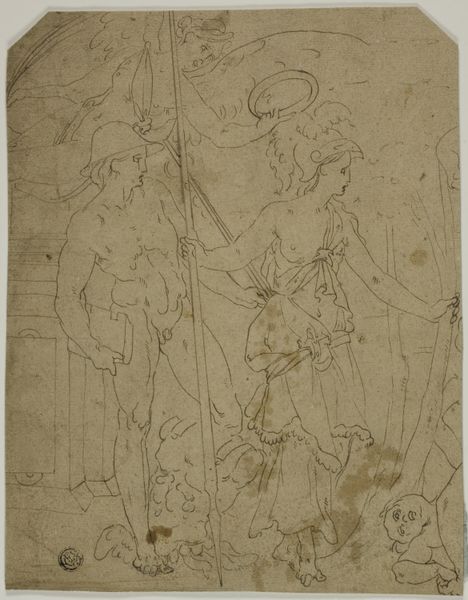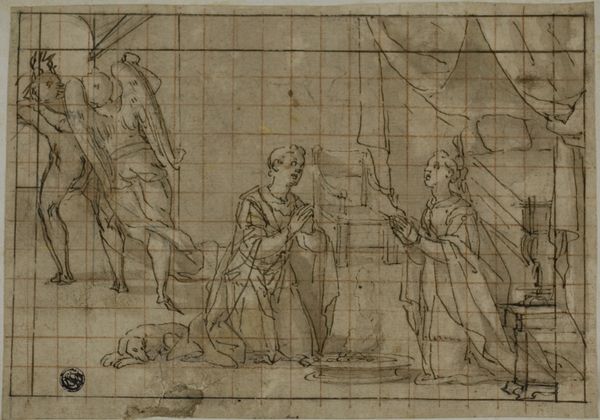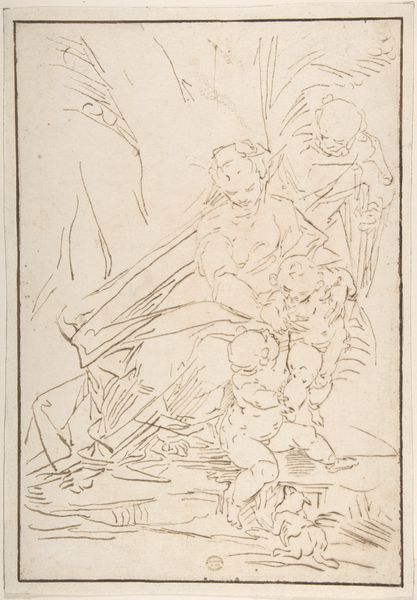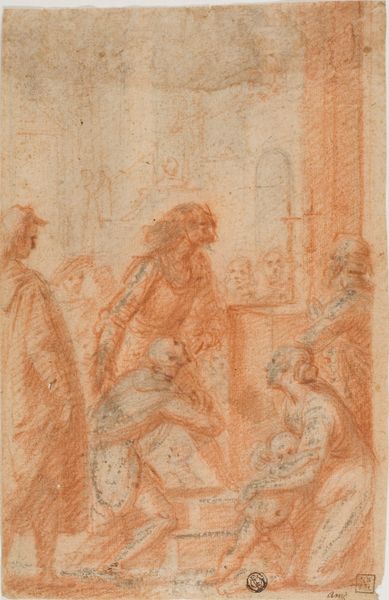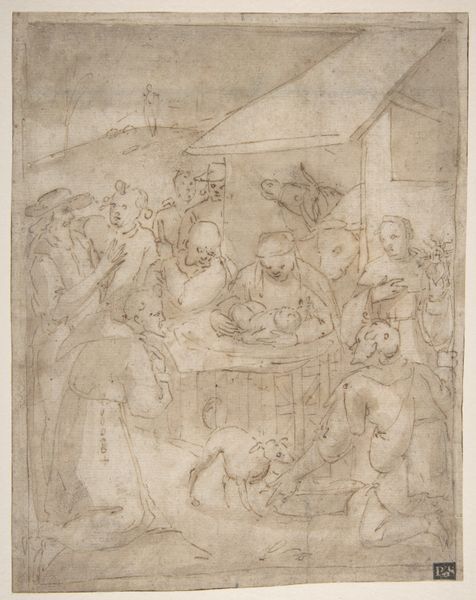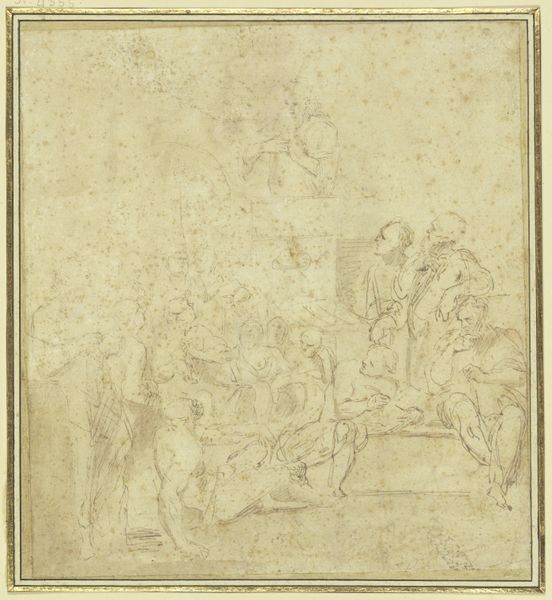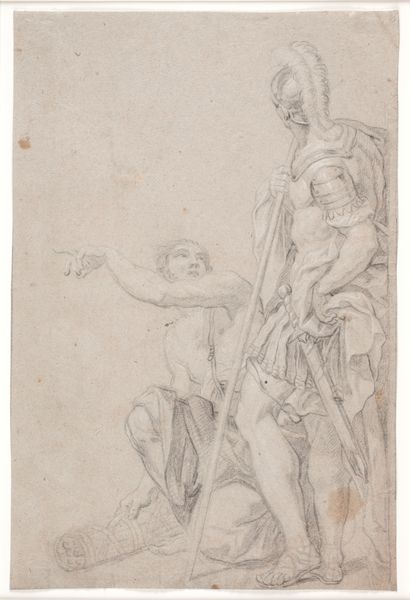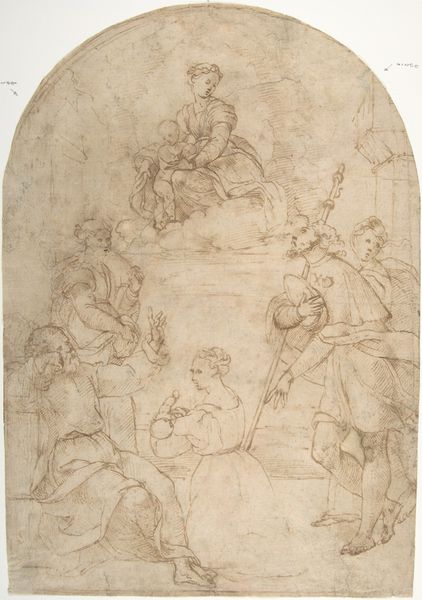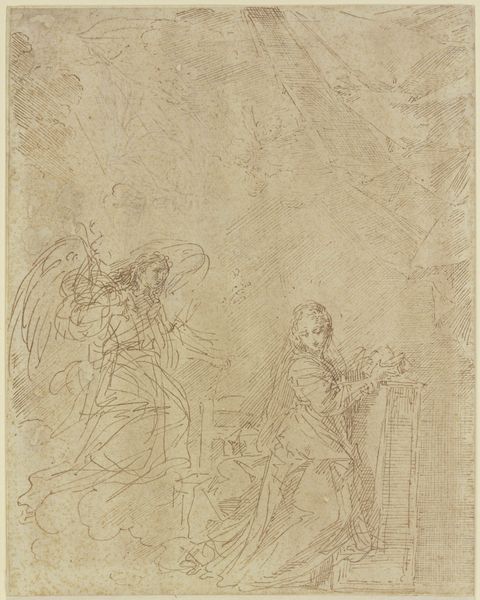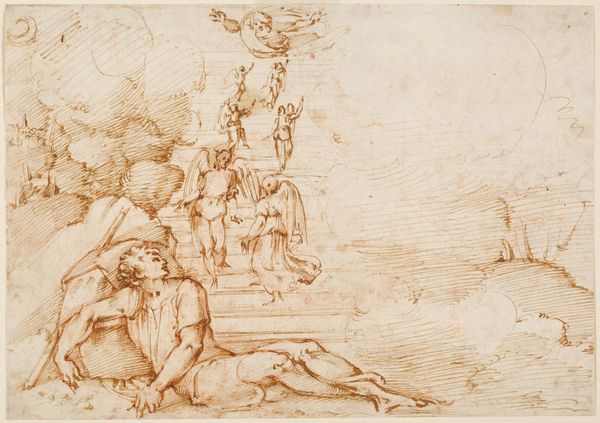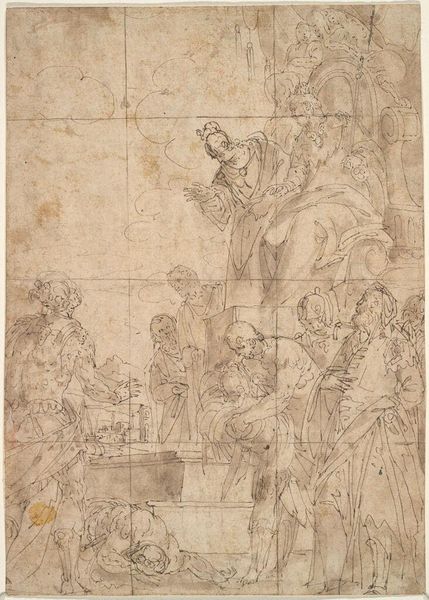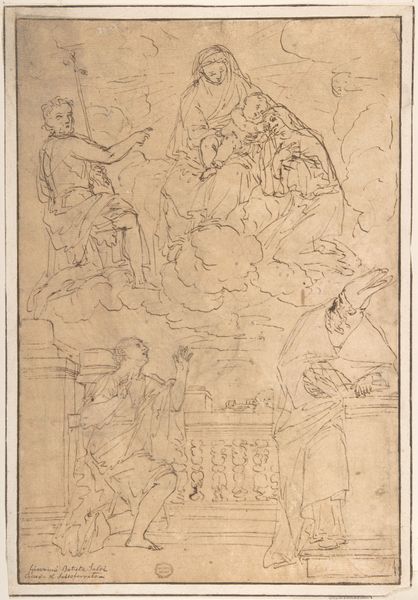
drawing, print, pencil
#
drawing
# print
#
figuration
#
11_renaissance
#
pencil
#
history-painting
#
italian-renaissance
#
male-nude
Dimensions: 9 9/16 x 6 7/8 in. (24.3 x 17.5 cm)
Copyright: Public Domain
Curator: Here we have Giambattista Zelotti’s “Seated Warrior Between Two Figures,” a pencil drawing made sometime between 1526 and 1578. Editor: There’s a sort of somber gravity to it. It feels more like a study or preparation for something grander, maybe? The grid is visible. Curator: It very well could be. The grid does tell us something about its production. It shows the artist used a system of measurement and scaling, likely in preparation for a larger fresco or painting. Think of the labor involved. Editor: Right, the gridded construction definitely grounds the idealised forms of the figures within the tangible work and material limits of the artist’s studio. And look at how Zelotti represents the male figure. Is he a symbol of masculine strength in this moment of stillness? His seated position with surrounding figures perhaps challenges a singular reading of power. Curator: Absolutely, and consider the warrior’s garments. He is not fully armored, it shows a different way of presentation of the image of a soldier, compared to more “finished” portraits during this period. Editor: That tension between vulnerability and authority makes the image more interesting to me. Renaissance art is so much about constructing ideas of power and perfection and I think that the drawing can be appreciated due to it disrupting common narratives of power. Who were Zelotti's audiences and how might they receive that message? Curator: Also important is the material value! He worked mostly on frescoes, which require him and his assistants to deal with applying plaster on surfaces, drawing as a foundation, and finding pigment recipes, a crucial element to any painting. In what manner and how was drawing used to present Zelotti’s concepts on these other projects? Editor: Good point, Zelotti’s practice can provide new ways to interpret drawings not only as preparation works but also complex objects of production with an expanded historical and theoretical focus. There are endless amounts of interpretations with this. Curator: Precisely. By focusing on production, materiality and its connection to society, we see a different angle of not only what it represented during its time, but also what it signifies in art history today. Editor: Yes. Now I'm rethinking my initial reaction, seeing the figure not as somber but maybe contemplating an uncertain future.
Comments
No comments
Be the first to comment and join the conversation on the ultimate creative platform.
